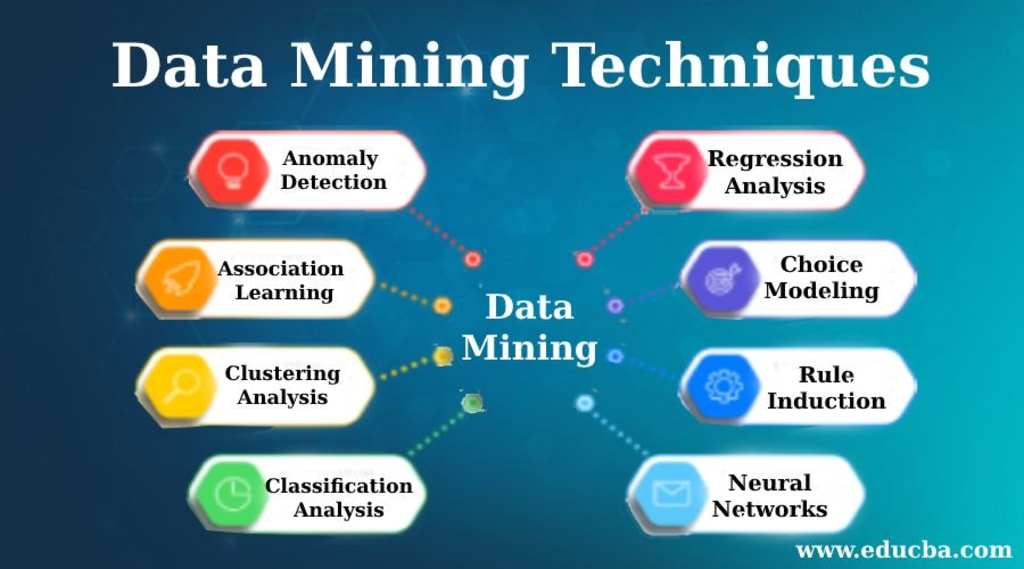
Data mining is a process of discovering patterns, trends, and insights in large datasets. With the rise of big data, data mining has become increasingly important for businesses and organizations looking to gain a competitive advantage in their respective industries.
At its core, data mining involves analyzing large amounts of data to identify patterns and correlations that can be used to make informed decisions. This can involve a variety of techniques, including statistical analysis, machine learning algorithms, and artificial intelligence.
One of the key benefits of data mining is the ability to uncover insights that might otherwise go unnoticed. For example, a retailer might use data mining to analyze customer purchase histories and identify patterns in their buying behavior. This information can be used to make targeted marketing efforts or to optimize inventory management.
Similarly, data mining can be used in healthcare to analyze patient data and identify trends in disease prevalence or treatment outcomes. This can help healthcare providers to better understand their patient populations and improve the quality of care they provide.
Of course, data mining is not without its challenges. One of the biggest obstacles is the sheer volume of data that must be analyzed. With so much data available, it can be difficult to know where to start or what to focus on. Additionally, data mining requires specialized skills and expertise, including a strong understanding of statistics and machine learning algorithms.
Another challenge is ensuring the accuracy and validity of the data being analyzed. Inaccurate or incomplete data can lead to erroneous insights and misguided decision-making. Therefore, it is important to have robust data management practices in place to ensure that data is accurate and up-to-date.
Despite these challenges, data mining has the potential to be a powerful tool for businesses and organizations in a wide range of industries. By leveraging the insights generated through data mining, organizations can make more informed decisions, optimize their operations, and gain a competitive edge in their respective markets.
In recent years, data mining has become even more powerful with the advent of big data technologies. These technologies allow organizations to collect and store vast amounts of data from a variety of sources, including social media, web traffic, and mobile devices. With this data, organizations can gain a deeper understanding of their customers and their behaviors, and make more targeted and effective marketing and sales efforts.
Overall, data mining is a powerful tool for organizations looking to gain insights from their data. By leveraging the latest techniques and technologies, businesses can uncover patterns and trends that might otherwise go unnoticed, and use this information to make more informed decisions and drive success in their respective industries.
There are many different techniques and approaches to data mining, each of which has its own strengths and weaknesses. Some common data mining techniques include:
Association rule mining: This technique is used to identify relationships between different variables or factors in a dataset. For example, a retailer might use association rule mining to identify products that are frequently purchased together, such as chips and salsa.
Clustering: Clustering involves grouping similar data points together based on certain characteristics or attributes. This can be useful for identifying patterns in customer behavior or for segmenting a market into different customer groups.
Classification: Classification involves predicting the category or class to which a particular data point belongs. For example, a healthcare provider might use classification to predict whether a patient is at high risk for a particular disease based on their medical history and other factors.
Regression analysis: Regression analysis is used to identify relationships between different variables and to make predictions based on those relationships. For example, a retailer might use regression analysis to predict sales for a particular product based on factors such as price, advertising spend, and time of year.
One of the key benefits of data mining is that it can be used to generate insights that might not be immediately apparent from the raw data. For example, data mining can be used to identify patterns or relationships that are not easily visible through simple data visualization techniques.
Another benefit of data mining is that it can be used to automate certain processes or decision-making tasks. For example, a financial institution might use data mining to automatically flag suspicious transactions for further investigation, or a retailer might use data mining to automatically adjust prices based on customer demand and inventory levels.
However, it is important to note that data mining is not a panacea. Like any tool, it has its limitations and can be prone to errors or biases. Therefore, it is important to approach data mining with a critical eye and to carefully evaluate the results it produces.
In conclusion, data mining is a powerful tool for organizations looking to gain insights from their data. By using advanced techniques and technologies, businesses can uncover patterns and trends that might otherwise go unnoticed, and use this information to make more informed decisions and drive success in their respective industries. However, it is important to approach data mining with caution and to carefully evaluate the results it produces. With the right approach, data mining can be a valuable asset for any organization looking to leverage the power of their data
About the Creator
Ferid Xelefov
i am a doctor






Comments
There are no comments for this story
Be the first to respond and start the conversation.